Are you planting Bald Cypress trees in your landscape? You may be wondering what growing conditions they require to thrive. This article will answer if Bald Cypress trees will grow in shady areas and more.
Bald Cypress (Taxodium distichum) won't grow to its full potential in the shade. This tree enjoys plenty of direct, unfiltered sunlight each day. Even partial shade areas won't work for a Bald Cypress.
Now you know that your tree requires sunlight, but how much does it need exactly? Keep reading as we answer this and tell you how fast you can expect your Bald Cypress to grow.
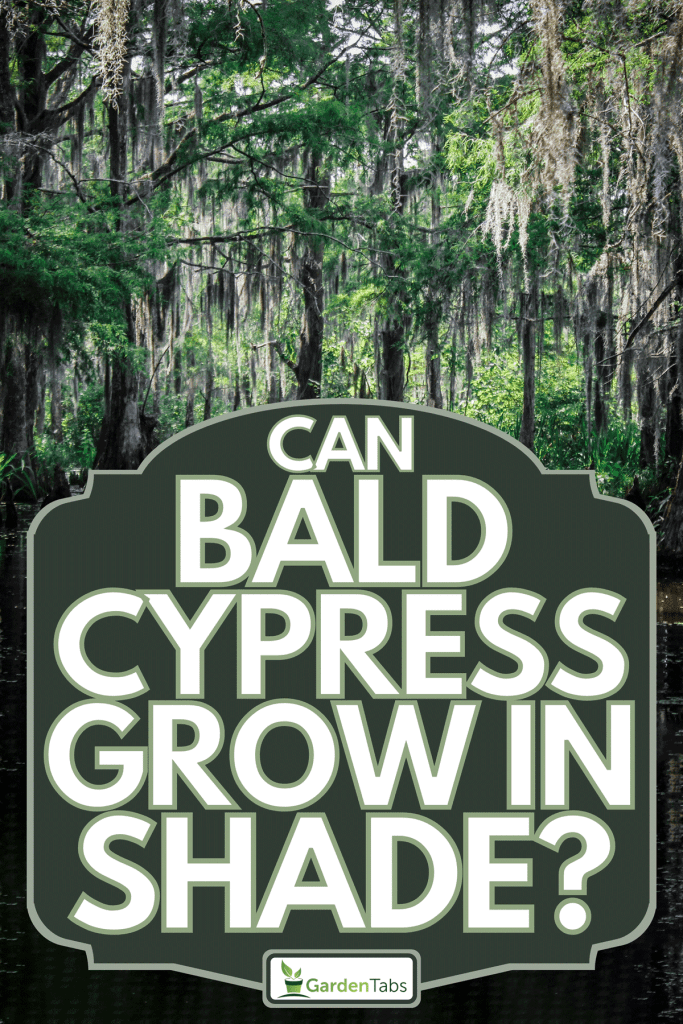
How Much Sun Does A Bald Cypress Need?
The Bald or Swamp Cypress is a hardy or tough tree. Known to grow in various soils, including both swampy and dry areas, this is a slow-growing yet long-living tree.
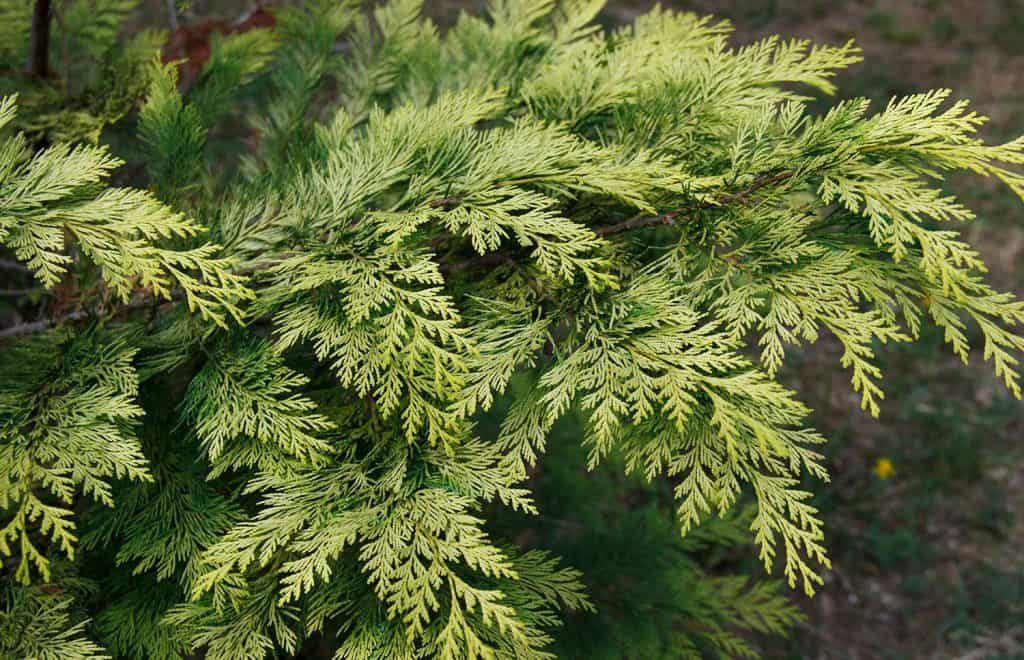
If you are planting Bald Cypress trees, you can enjoy the feathery needles this conifer has to offer. While these trees can grow in a variety of soils, they are pretty specific when it comes to their sun requirements.
Bald Cypress need full sun, meaning they need 6-8 hours of bright, direct sunlight each day. Light shade is acceptable, as long as these trees reach their 6 hours. However, more sun over less is ideal.
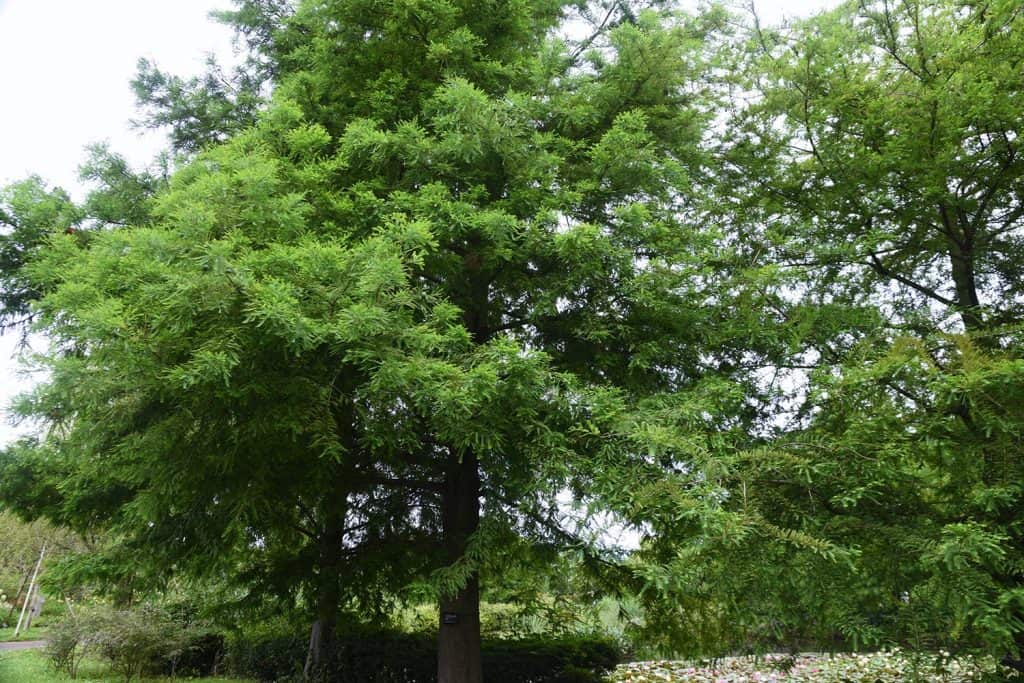
This species of trees are highly adaptable. If planting in areas with less than ideal sunlight, your tree will still grow. However, trees that do not receive their required sunlight will not grow up to their potential.
These trees may become stunted or have a higher risk of incurring diseases or other infestations.
Where Is The Best Place To Plant A Bald Cypress?
A unique aspect of Bald Cypress trees is that they can thrive in poorly drained or wet areas. This is great for those dealing with wet landscapes, including swamps. However, Bald Cypress can thrive in dryer areas as well.
So, where is the best place to plant this versatile tree? Bald Cypress grows best in hardiness zones 4-10. Where you plant them on your landscape is entirely up to you - as long as there is plenty of sunlight.
Planting in wet areas versus well-drained soils can give you different results. For example, planted in a wet area, your tree has a higher chance of producing knees.
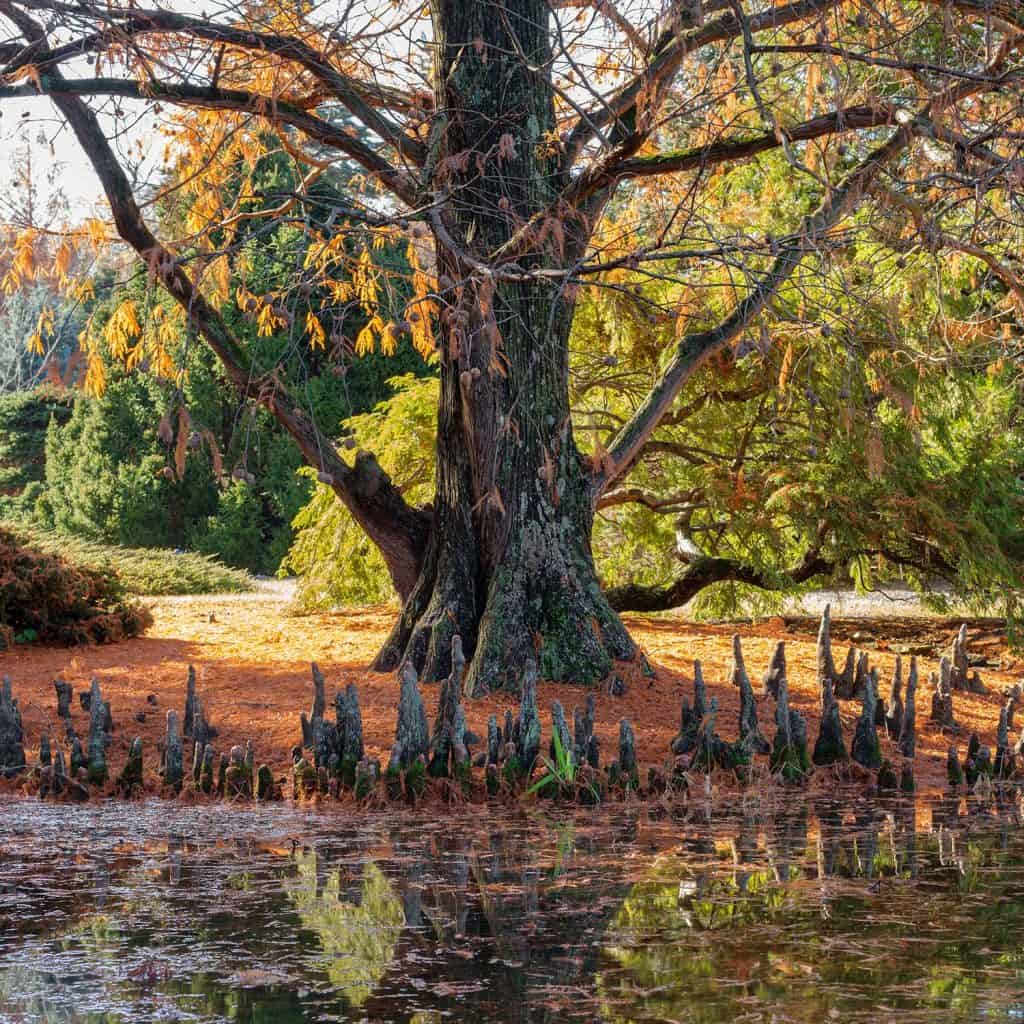
Bald Cypress can be beautiful as a stand-alone tree. Other times they are placed to create hedges or line pathways. Most areas on your landscape will be great for planting.
The best place for a Bald Cypress is somewhere with plenty of direct sunlight. As long as you meet this need, you can be flexible with the placing.
Read more on our blog post, "Can Bald Cypress Grow In Wet Soil?"
What Are Bald Cypress Knees?
Bald Cypress is the only conifer that develops knees. These knees are an extension of the root system and are referred to as pneumatophores.
While the exact purpose of the knees is unknown, there are some speculations as to why they appear.

Cypress trees closer to or submerged in water are more likely to develop knees. This has led to the belief that the knees' purpose is to aerate the root system.
Additionally, these structures may support the tree and assist in anchoring it into wet soils. Trees in dry soil do not need to be further anchored and already have plenty of air for their roots.
It's possible that Bald Cypress trees in drier soils do not form knees for these reasons.
Additionally, you can remove unwanted knees from Cypress trees without damaging the tree.
Are Bald Cypress Good Shade Trees?
A shade tree provides shade to the surrounding area with its spreading canopy and can give shelter from the sun on hotter days. While Bald Cypress trees offer some shade, they aren't the best shade trees.
Ideal and reputable shade trees include Oaks, Willows, Maple trees, and more. All have a vastly large canopy or crown. However, Bald Cypress is a conifer tree with a more cone-shaped crown.
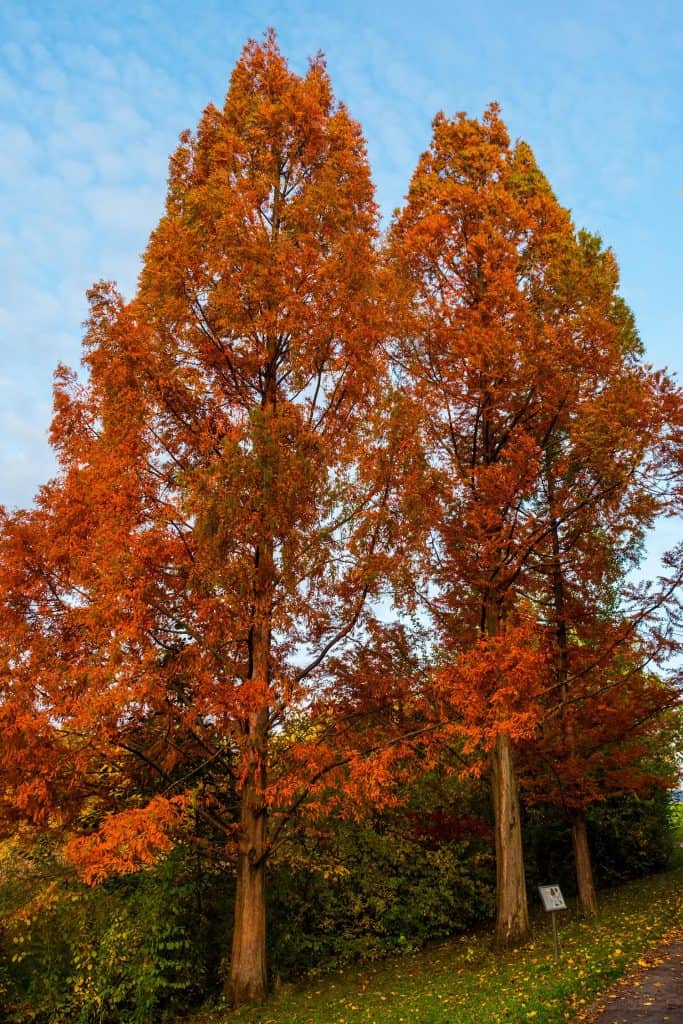
Landscapers appreciate Bald Cypress for its slow growth and longevity over providing shade. Bald Cypress are not good shade trees but are recognized for their other unique characteristics.
How Fast Does A Bald Cypress Grow?
Once established, the Bald Cypress is a low-maintenance tree. You can enjoy the growing process over the next several years with little management. This tree has a medium growth rate.
You can expect to see 40-50 feet of growth over 15-25 years. Each year, Bald Cypress will grow 24-46 inches on average. These numbers can change slightly based on which zone you are growing in.
Mature trees will reach 60-80 feet with a canopy spread of up to 25 feet. Keep in mind the mature height of any tree when planting.
Can I Help A Bald Cypress Grow Faster?
There are certain steps you can take to optimize the growth of your Bald Cypress. These trees are most sensitive when they are young, and it is essential to set them up in an environment they can thrive in.
Newly planted trees need moisture consistently. The root system should be constantly moist for 2-3 months after planting. Supplement inadequate rainwater with irrigation by soaking the soil around the tree every couple of days.
After the first year, you can start adding fertilizer to aid your Bald Cypress in growing faster. These trees may benefit from high nitrogen, slow-release fertilizer. Only fertilize in Spring, and this can be done annually.
Once you have an established tree, the care goes down drastically. Although, you can continue to feed your tree by covering the surrounding soil with a thick layer of mulch.
The mulch gives your tree nutrients from organic materials while providing moisture and protection to the root system.
Read more on our blog post, "Do Bald Cypress Have Invasive Roots?"
What Kills Bald Cypress?
Even though Bald Cypress trees are low maintenance, they can still be at risk for certain diseases, infestations, or other illnesses. Always keep an eye out for signs that your tree is declining.
Conditions left untreated can ultimately lead to the death of your tree. Signs that your tree is under stress or declining in health include browning leaves, early leaf drop, and flaccid or wrinkly leaves.
If you see these symptoms, your Bald Cypress may be suffering from one of the following issues:
- Chlorosis
- Spider Mite infestation
- Cypress Carpet Month infestation
- Cypress Blight
These conditions or infestations can slowly kill your Bald Cypress if you do not take steps to treat or resolve the problem. Let's take a closer look at what Bald Cypress trees are at risk for.
Chlorosis
Chlorosis is a condition that many trees can suffer from. The leaves stop producing chlorophyll, creating a pale or yellow color. When leaves lack chlorophyll, they have little to no ability to produce carbohydrates, leading to death.

Nutrient deficiency causes this condition. A lack of iron and magnesium is typically the cause in Bald Cypress. Fortunately, consistent watering and fertilizing can help resolve this issue.
Spider Mites
Leaves that are yellow or brown could mean you are dealing with a spider mite infestation. These small red mites suck nutrients from your tree, causing dehydration, starvation, and eventually death.
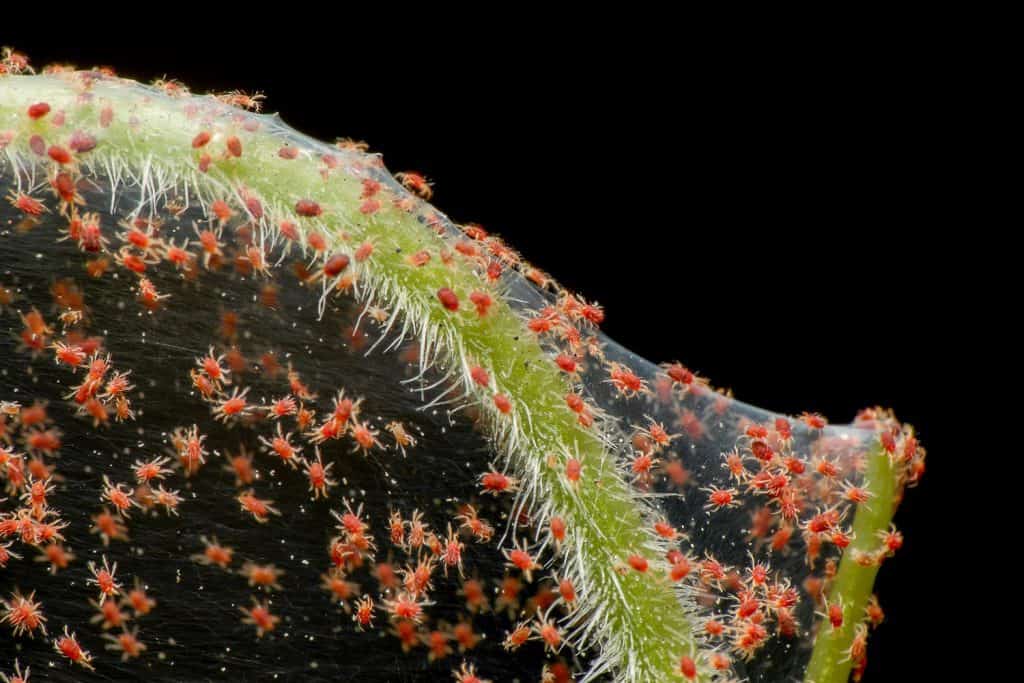
These mites reproduce quickly, leading to an infestation getting out of control. Treat and prune your tree as swiftly as you can after noticing spider mites.
Cypress Carpet Months
An infestation of Cypress Carpet months appears as yellow and black markings on the leaves. When the moth's larvae enter the tree needles, you will see advanced discoloration and weakened growth.
This is another infestation that you need to get under control quickly. Getting your tree back to a healthy state after the months get removed will take time and patients.
Cypress Blight
Bald Cypress are susceptible to a fungal infection called Cypress Blight. This condition will start at the bottom of your tree and work its way upward. You will notice leaves turning brown or red and dropping early.
With all of these diseases, try to catch the signs as early as possible and quickly treat the tree.
Learn more on our blog post, "Why Is My Bald Cypress Tree Turning Yellow?"
In Summary
Bald Cypress trees prefer direct sunlight to shade. However, they are flexible when it comes to just about any other environmental condition. We hope you found this article insightful when plating some Bald Cypress trees of your own.
Are you searching for trees that enjoy the shade? Have a look through our blog post, "11 Gorgeous Trees That Like Wet Soil And Shade."
